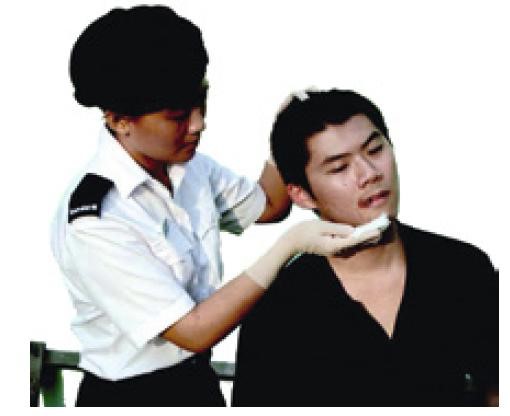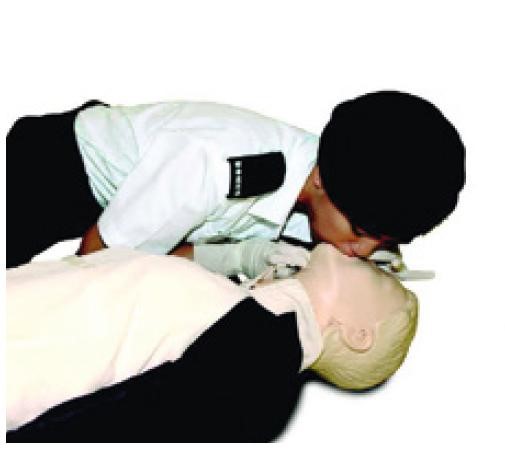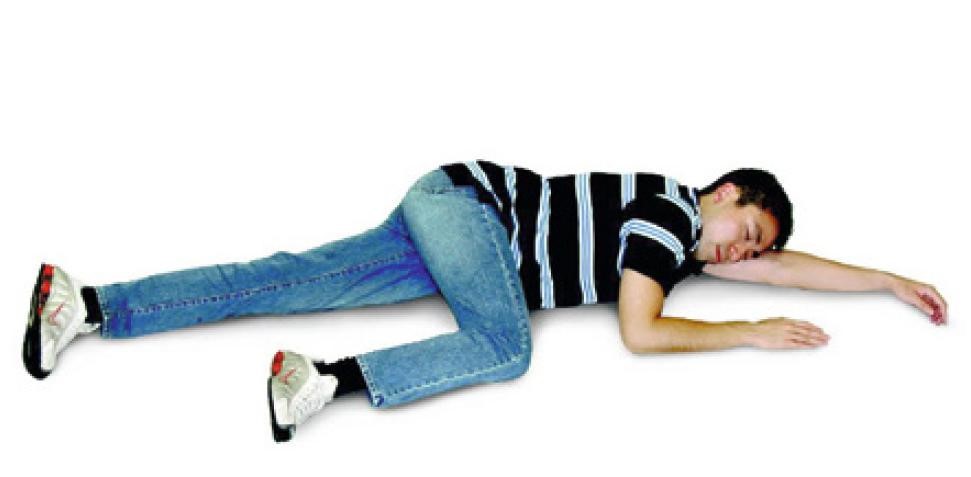


Do not move injured people unless there is immediate danger. You could make worse any internal, back or neck injuries.
If you are not sure what to do, leave them well alone, but try to help if they are having difficulty in breathing or are bleeding heavily.
Inside vehicle
- Do not move the injured people unless there is immediate danger, for example a fire.
- Support the head in case the injured people passes out and chokes.
- Remove any food, debris, fluid or false teeth from the mouth.
- If there is bleeding from mouth and nose then turn gently to his/her side.
- Look, listen and feel for breathing and chest movement. If you cannot detect breathing, try to restore the injured people by the mouth-to-mouth resuscitation. (See column 'mouth-to-mouth resuscitation to start breathing')
Mouth-to-mouth resuscitation to start breathing
Roll the injured people onto his/her back. Support the neck so that the head falls back to open the airway. Pinch the injured people's nose shut and hold the mouth open. Cover the mouth with yours and blow out firmly to inflate the lungs. Then release nose and mouth. Keep repeating until the injured people starts to breathe unaided.
Outside vehicle
- Do not move the injured people unless there is immediate danger, then only move them a short distance to a safer place. Do not allow his/her neck to move.
- Roll gently onto his/her side.
- Remove any food, debris, fluid or false teeth from the mouth.
- Look, listen and feel for breathing and chest movement. If you cannot detect breathing, try to restore the injured people by the mouth-to-mouth resuscitation. (See column 'mouth-to-mouth resuscitation to start breathing')
To stop serious bleeding
Wear a pair of rubber gloves if available and apply very firm hand pressure to the bleeding point to stem the flow of blood. Use a pad or apply a sterile dressing and bandage firmly.
If conscious and breathing
Look for broken bones and hidden injuries. Gently support the injured people in a position of least pain. Avoid unnecessary movement.
People in shock - pale and sweating - should lie down with legs raised, if possible. But only if they are not injured or there is no risk of internal injuries.
Keep all injured people, including those in shock, warm. Do not give them pain relievers, alcohol, other drinks, food or cigarettes - they may have internal injuries and will require medical treatment.
Reassure them confidently that help is coming.